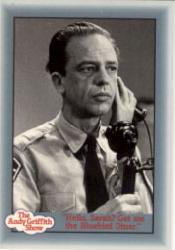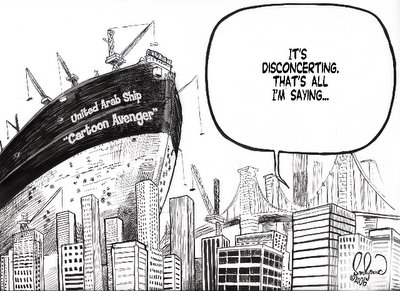A Note To Readers
Three More Places
Welcome. In February, 2006, I made a pilgrimage to the Holy Land, and the bulk of the posts for the February, 2006 archive describe my impressions. To begin, scroll down to Feb. 3, where I announce the trip, and then scroll up from there to read the posts in order. Feel free to skip over the occasional other items mixed in. Pray for the people of the Holy Land --and go there if you possibly can! --RC2
There's always more to tell, but I think I'll close this travelog with a few words about just three more places.
- The first is Bethany. It's on the Eastern slope of Mt. Zion, and the Franciscans have a lovely church there built on the grounds of Mary & Martha's house. You will definitely get a sense of peace there, and understand why Jesus loved to visit. The original entrance to Lazarus' tomb was blocked off by the Muslims, but the Franciscans cut a side entrance, so you can still visit and see it.
- Of course you have to see the Dead Sea --before it disappears! It's evaporating away. It's probably a pleasant experience to bathe there in warm weather, but we were there in winter. It's too far below sea level to truly be cold --the enterprising kibbutzim have even desalinated the land and started date farms all along the region-- but it was overcast when we were there, and the only folks bathing were Japanese & German middle aged tourists. It was interesting to feel the minerals in the water (feet & hands), but to be honest that was more flab and wrinkles than one needs to see in a lifetime!
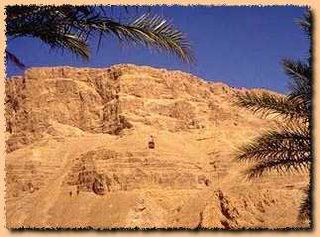 We visited Q'umran, the site where the Dead Sea Scrolls were found, which was wrthwhile, but archaeologically speaking, the most amazing place is Masada. It simply boggles the mind to see what Herod the Great built on this forsaken mountaintop --without benefit of cranes, electricity or monster trucks. Because of its location, everything is preserved. You can see not just bare stone walls, but the plaster put over it, and in some places even the way the walls were painted; it gives you a very different sense of how civilized life was. Through a cistern system and small channels for water to flow cut into the walls everyhere, Herod even had running water, a steam room and hot baths --and this was the fortress he never used. It was "just in case."
We visited Q'umran, the site where the Dead Sea Scrolls were found, which was wrthwhile, but archaeologically speaking, the most amazing place is Masada. It simply boggles the mind to see what Herod the Great built on this forsaken mountaintop --without benefit of cranes, electricity or monster trucks. Because of its location, everything is preserved. You can see not just bare stone walls, but the plaster put over it, and in some places even the way the walls were painted; it gives you a very different sense of how civilized life was. Through a cistern system and small channels for water to flow cut into the walls everyhere, Herod even had running water, a steam room and hot baths --and this was the fortress he never used. It was "just in case."
The enormous well-organized store rooms are amazing. Archaelogists found grain and fruit supplies here that could have allowed the Zealots who camped here after the fall of Jerusalem to survive two more years of siege had the Romans not been able to burn down the entrance to the fortress. You feel very small here in more ways than one. Masada's not for the weak of stomach. Heights have never bothered me, but I found myself dizzied by the cable ride to the top and the feeling of exposure at the edges. And you also realize the vacuity of the contemporary assumption that anything not contemporary must have been primitive. At Masada you find yourself wondering if anything nearly so great has ever been accomplished since. (Look at some pictures.)
If you know the story, the zealots held out for years against Roman siege, and when they knew they were beaten, they committed suicide rather than be taken as slaves. Israeli defense forces now come to Masada when they complete their training, and swear an oath that there will be no more Masadas --that they will fight to the death protecting Israel instead. I thought about that oath on the way out of Israel (ponderous layers of security; be prepared for the fact that just when you think you're through all the checks, there will be two more). Think about what our airport security personnel look like. The Israeli personnel are all young people --18, 20, 25-- and they take their roles very seriously. No one's working a job; they're serving their country. It's impressive.
By popular request I'll collect all these posts in one link for easy access when I have the chance. If you've enjoyed this series of posts at all, then do me the favor of remembering the Holy Land in your prayers, especially the Christians --"the salad in the sandwich"-- whose stories I promised to tell when I got home. Remember their three requests: pray, visit, and tell the truth about the situation. For myself, I went to Jerusalem with the idea of making a once in a lifetime trip. But the place gets to you, and I am dreaming about how to go back --hopefully with my whole family.
The Jewish Sabbath
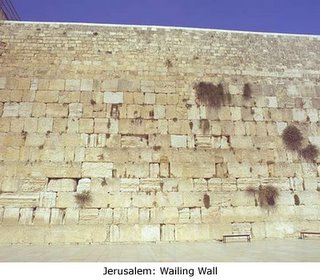 What I Saw In The Holy Land, 18
What I Saw In The Holy Land, 18Holy Sepulchre, II

What I Saw In The Holy Land, 17.1
At one time there were separate small chapels at Calvary and the Holy Sepulchre, and lesser shrines such as one for Joseph of Arimathea, St. Helen's chapel, etc., but now the large Basilica encloses all these places. Just as I was surprised at the great distance between the cenacle and Gethsemane, I was amazed at how close the sepulchre is to Calvary. No distance at all.
My impression is that most visitors to the Church of the Holy Sepulchre visit Calvary & the tomb, but give the rest of the church short shrift. As I say, you owe it to yourself to come early in the morning. Visiting priests get themselves put on the schedule to celebrate masses at Calvary or in the Holy Sepulchre itself beginning at about 4:00 am, so if you're not fussy about what language it's in, you can always find a mass to attend. Then you'll have some time afterwards to explore in silence.
I found it easy to rise early, not only because of the time difference, but because my hotel room happened to have a minaret close by, and the voice of the muzzein summoned me at 4:30 am each morning. Arabic chanting is certainly strange to Western ears, but my guy had a rich baritone, and when you're out on the street in the dark, with the city otherwise still, it's hauntingly beautiful. If you stay at Notre Dame Institute, it's a short walk through the deserted streets of the Old City (except for loads of more or less feral cats --reminiscent of Rome). A left, a right, a left, one more left at the Mosque of Omar, and there you are.
The stone of anointing, where Christ's body was prepared for burial, is facing you as you enter. If you go right, you climb up to Calvary, which I've described. If you head forward past the stone and turn right, you'll pass the exposed rock of Golgotha, which I think most people miss, and if you continue that direction you can go down to the Armenian chapel and grotto where St. Helen found the True Cross and other artifacts of the crucifixion.
Heading back to the entrance and heading off left this time, you'll see the chapel built over the Holy Sepulchre itself (as above). The sepulchre is one site where the records are so clear that no one doubts this is the spot; it's more than pious tradition. In fact, at the back of the sepulchre you can sometimes enter the network of funeral caves where other people were buried --including Joseph of Arimathea. There's no longer a cave surrounding Christ's tomb, because a mad caliph hacked away at it, but the slab where the body lay is there and a tiny chapel --room for no more than 5 people-- is erected over it. You have to stoop to enter, and there you are: at the site of the Resurrection. A piece of the stone rolled over his tomb is preserved just outside.
There are dozens of other chapels to explore, too. And on Saturday night if you're feeling pious, curious, ecumenical or simply like a night owl, a cool thing to do is go to the Church at 11:00 pm to watch the various Christian rites celebrate the vigil of the Resurrection. It's grueling -- and you'll be locked in except for the times the doors are opened to receive the faithful for services-- but you can watch the Coptic rite, the Syrian rite, the Armenian rite and the Greek rite in sucession. (Latin rite comes at the civilized hour of 6:00 am.) Christians in the Holy Land are there to proclaim the risen Christ --and they do it in the wee hours every Sunday morning for 4-6 hours straight, depending on the liturgical season.
Church of The Holy Sepulchre
 What I Saw In The Holy Land, 17
What I Saw In The Holy Land, 17 When I lived in Rome, I found you could always pick Americans out of the crowd at a papal audience, because they'd be the ones not dropping all pretense of prayer once the Our Father began and pressing to the front of the security walls in the hopes of shaking John Paul II's hand at the conclusion (I have the impression Benedict's crowds are so large he just travels by popemobile through St. Peter's square). You'd hear an exasperated and scandalized voice protest, "I'm sure the Holy Father would want us to pray instead." Oh, please. Can the wedding guests fast when the bridegroom is present? Similarly, if you google "Church of the Holy Sepulchre," you can find travel tip sites where many people express a similar scandal about this site; they don't find it prayerful.
It's true, there are some negatives. The Church is in disrepair. As I've written previously, you can't see what you really long to see: the site as it was. And here, as in Bethlehem, it can be disturbing to find that within these walls are not really one church, but several, with elaborate rules about who has access to the holy sites when. "Can't we all just get along?" you want to shout. Additionally, if you go only during tourist-y hours, you may be harrassed by long lines or overhearing the impious comments of other tourists. (Once when our group was on its knees to venerate Calvary, two Americans --natch!-- not travelling together happened upon each other and got into a protracted and jovial catch-up conversation about life stateside. Take it outside, boys.)
Get over it. I think the disrepair actually adds to the mystique of the place. It feels ancient. Ahem: 2000 years old, destroyed by Hadrian, then again by a mad Muslim caliph, and subject to fires and earthquakes. You try looking fresh after all that. As for the various schedules and rites: if you let them, they can be a testimony to the richness of liturgical expression within Christianity and an example of mutual cooperation. The triple (Latin, Greek, Armenian) custody of the Holy Sepulchre is an agreement more than 1000 years old, and itself now forms part of the beautiful traditions associated with the Church. There is a daily ritual of passing the keys of the church to the appropriate Christian sextons according to whose turn (or which community's feast) is being celebrated. I came to see the various rites and rules as an expression more of mutual collaboration and respect (and even ecumenism --Muslims hold custody of the keys) than one of schism.
Everything is perspective. The first morning we visited Calvary, it was Sunday at 5:30 am, and at the close of our private mass, we were in line to venerate the place where the cross had stood. I was busy repenting of my sins --every little act of selfishness having fallen heavily upon my conscience as I came face to face with the spot where their consequence was paid-- when suddenly an organ started blasting. It was discordant, to say the least. In a reflective and penitential mood, the last thing you want to hear is the triumphant tone of an organ.
However, the following Sunday, I attended the local Franciscan community's 6:00 am mass at the Holy Sepulchre --the actual site of the Resurrection-- and there the organ was exactly right. (Plus, to be honest, since the Syrian rite monks chant their Eastern-sounding hymnody at the same time, you couldn't possibly follow the parts of the mass without the organ, since the celebrant disappears into the holy sepulchre at various times.) So if you want to understand the richness and power of these holiest sites in Christendom, you owe it to yourself to come early in the morning, for Mass, but without "the masses."
Continued in the next post.
The Last Stations
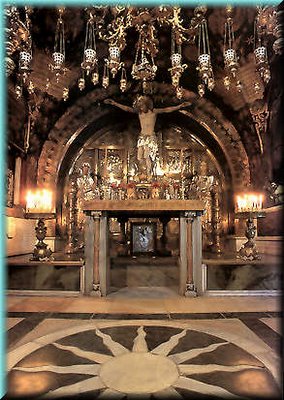
What I Saw In The Holy Land, 17
Read This First (Intro. to Part 16)
Until the Muslim Sabbath. Entering the Old City (and by a different gate than the one we'd planned, because some entrances to the city are closed) was a little frightening Friday morning, because the entire perimeter was surrounded by armed Israeli army and police. Speaking strictly as a pilgrim reporting her spontaneous reactions, I must say I found it hard to credit claims that Islam is a religion of peace when everyone is so fearful on its holy day. No extra guards are required during the week or during the Jewish & Muslim days of worship. But as I later discovered, the U.S. State Dept. actually forbids its personnel to be anywhere within the Old City between 11 and 2 on Fridays, so volatile are the worshippers. Everyone understands that whether or not there will be "incidents" depends entirely upon what the imams say Friday morning, and the city was especially tense because of the Danish cartoon protests. There had been a series of "incidents" involving the beating of Christian pilgrims on the Via Dolorosa since 'Toongate made the news in Jerusalem. In retrospect, it was quite naive of our group to be where we were at the time we were, and I don't recommend it to you when you go, but in our case the saying that the Lord takes care of fools and weaklings held true. But I'm getting ahead of myself.
So Persecuted They The Prophets
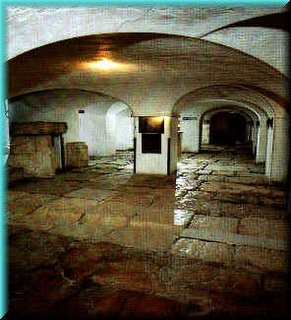 With fear, however, comes a certain heightened awareness of your surroundings that I'm sure solidified my memories of that beautiful experience. I can still see the vendors with their carts of special breads and nut candies (most of the shops were closed for the Muslim sabbath), and the seeming wall of people streaming toward us (the streets are narrow, so they just keep coming and coming and coming). And I remember too, the strange happiness I felt when people cursed us. "Rejoice and be exceeding glad, for so persecuted they the prophets before you." It struck me that what I was experiencing certainly captured the flavor if not the intensity of what Mary & the other women following Christ must have experienced. They were following someone they loved and revered as God to his unjust death. And all around them there was hatred, or simple busy disinterest. I was humbled and grateful to join the steady stream of witnesses who've followed in Christ's path since the Franciscans formalized the practice (following what local Christians had always done) in the Middle Ages.
With fear, however, comes a certain heightened awareness of your surroundings that I'm sure solidified my memories of that beautiful experience. I can still see the vendors with their carts of special breads and nut candies (most of the shops were closed for the Muslim sabbath), and the seeming wall of people streaming toward us (the streets are narrow, so they just keep coming and coming and coming). And I remember too, the strange happiness I felt when people cursed us. "Rejoice and be exceeding glad, for so persecuted they the prophets before you." It struck me that what I was experiencing certainly captured the flavor if not the intensity of what Mary & the other women following Christ must have experienced. They were following someone they loved and revered as God to his unjust death. And all around them there was hatred, or simple busy disinterest. I was humbled and grateful to join the steady stream of witnesses who've followed in Christ's path since the Franciscans formalized the practice (following what local Christians had always done) in the Middle Ages.Bundesminister der SayVunThinkUndDoAnuzzergung
Und vhy are you lookink at us like zat?
Just A Photo

This is the Dome of the Rock and Old Jerusalem as seen from the Mount of Olives. Mostly I'm just plugging this site, which has amazing photos of Israel (2002) as well as many other places.
At Random
- Here's WaPo's humor columnist on cartoon ecumenism. It's kind of amusing, with a zinger at the end. Too short to excerpt, but you can read it.
- As I'm writing, the Weedlets are watching March of the Penguins in the background. It's marvelous, but isn't this the movie that some folks were taking as some kind of morality tale about marriage? Goodness, I can't understand why. Every third line is about partnerships ending, and there's heavy emphasis on the non-survival of the unfittest. Actual line I just heard after two terrible blizzards and loads of death: "The worst is actually yet to come." Either some people have an extremely low view of marriage, or I've mistaken the movie.
- My 5-yr-old asks: "Mom, what is the nuts' favorite hymn?"
- "Don't know, Buddy, what is a nut's favorite hymn?"
- "Peanut afraid."
Yes, I'm Aware All Hell Has Been Breaking Loose
 "A Reason to Panic" From The Ryskind Sketchbook.
"A Reason to Panic" From The Ryskind Sketchbook.- By now it's looking as if the opposition over-reacted and the Administration will get its deal, but admit it, isn't this --Ryskind's cartoon-- what you thought when you first heard about the Dubai deal? And Jimmy Carter's defense? Incidentally, I have a friend who's kind of a hotshot lobbyist, and his firm happens to handle the Dubai account (though he doesn't, personally). According to this insider, Dubai doesn't care too much about the port deal; what it is very interested in is the trade agreement it's about to sign with us --and therefore it will do whatever we want, including scuttle the port deal if it comes to that-- in order to see the trade agreement through.
- Ninme's got a post with informative links about the MSM practically salivating for civil war in Iraq --but not getting it. And if you scroll down a bit, she's been following the Muslim-Christian fighting in Nigeria. About which let me add solely that we've had a Nigerian priest in residence in our parish for the past few years as he completes some work for the Nigerian bishops' council. He says that half his family is Christian, the other half Muslim, and that the two religions have always gotten along in Nigeria. . . .until a few years ago, when Wahabist provocateurs from Sudan started infiltrating and spreading their poison. So the coalition for Dafur might be saving the rest of Africa, too . . . .
- Meanwhile, the Catholic inside baseball crowd is stirred by B16's choices for his upcoming consistory (he's named his first Cardinals, boys & girls), reading in it the beginning of the hoped-for-by-Conservatives shake-up of the Roman Curia. I'm not insider enough to recognize many of the names, still less to read a portent in them, but I did have the thrill of seeing someone I actually "know" on the list. (Let's not exaggerate: have met on a couple of occasions.) Archbishop Carlo Caffarra of Bologna. I met him in connection with his work founding the John Paul II Institutes, before he was Archbishop. A lovely man, and if he's typical of the rest, I too am thrilled.
- I found the list at Zadok's, and he's got a post about a new forced-sterilization project in India. Yikes.
The Garden of Gethsemane

What I Saw In The Holy Land, 15
At the foot of the Mount of Olives is the Church of The Virgin's Tomb, which according to the Orthodox is the site where the Virgin Mary was buried. I'd no idea the Orthodox thought was that Mary died, was buried and then was assumed. Seems complicated to me, but we can think what we like, as there is no definitive Tradition beyond the fact of Mary's Assumption.
See the shadow in the above photo? Just to the right of  the entrance to the Church is this little grotto, which I entered before I knew what I was seeing. Pausing to just take the site in, I suddenly got a creepy feeling, as if some evil was present here. I don't mean to be overly dramatic --there were no rats, no sudden chill in the room-- I just didn't like the place. Turns out this is where Christ left the disciples praying while he went off "a stone's throw" to pray; and the place where Judas betrayed him when he returned to wake his sleeping friends. Yes, friends, I am RC2, your humble mystic blogger!
the entrance to the Church is this little grotto, which I entered before I knew what I was seeing. Pausing to just take the site in, I suddenly got a creepy feeling, as if some evil was present here. I don't mean to be overly dramatic --there were no rats, no sudden chill in the room-- I just didn't like the place. Turns out this is where Christ left the disciples praying while he went off "a stone's throw" to pray; and the place where Judas betrayed him when he returned to wake his sleeping friends. Yes, friends, I am RC2, your humble mystic blogger!
 Up the mount a little ways --yes, it's really "a stone's throw" if the person is not throwing like a girl-- is the place where Christ entered his agony. We came twice. By day as sight-seers; but truly moving was receiving permission from the Franciscans to return by night and do our holy hour here Thursday evening. This is one of eight ancient olive trees in the garden that have been carbon-dated to show they're at least 2000 years old. The Franciscans call them "the silent witnesses" to Christ's prayer.
Up the mount a little ways --yes, it's really "a stone's throw" if the person is not throwing like a girl-- is the place where Christ entered his agony. We came twice. By day as sight-seers; but truly moving was receiving permission from the Franciscans to return by night and do our holy hour here Thursday evening. This is one of eight ancient olive trees in the garden that have been carbon-dated to show they're at least 2000 years old. The Franciscans call them "the silent witnesses" to Christ's prayer.
Inside, "The Church of All Nations" (so-called because collections from the whole world paid for it) is built over the rock where Christ knelt to pray the cup would pass from him, and yet deferred to the Father's will. 
The Mount Called Olivet

What I Saw In The Holy Land, 14
By far the most moving site on the Mount of Olives is Gethsemane, which is about halfway up the mountain. However, I'm going to "take" you to the points of interest starting at the peak and descending the Western slope. Above is the grotto of the Church of Pater Noster. This little chapel is built in the spot where Christ is said to have taught the disciples the Our Father. A Carmelite convent is here (a church is in the works, but lacks funds for completion at present), and all along the walls of the cloister are the words of the "Our Father" in every imaginable language --including Cherokee! If you've ever visited the Franciscan monastery in DC, you already know what the plaques look like. See what I mean about the extraordinary number of sites from Christ's life that are preserved? It's beautiful to think of Jesus & the disciples gathered together in a quiet cave somewhere, perhaps taking a meal, and the question of prayer coming up in conversation.
 You'll walk past the Russian Orthodox church of Mary Magdalene. I'm not intentionally short-changing the orthodox sites, but they tend to have restricted visiting hours. Say, Tuesdays from 10-noon. So they are often much more difficult to see. The Russians venerate the stone where Mary Magdalene saw St. Stephen martyred inside this church.
You'll walk past the Russian Orthodox church of Mary Magdalene. I'm not intentionally short-changing the orthodox sites, but they tend to have restricted visiting hours. Say, Tuesdays from 10-noon. So they are often much more difficult to see. The Russians venerate the stone where Mary Magdalene saw St. Stephen martyred inside this church. The Last Supper
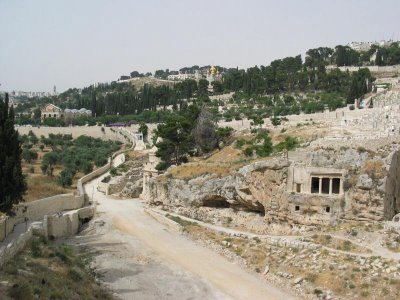 Here's a photo from the halfway point, taken from the Kidron Valley & looking up at the Mount of Olives. If you can make out the golden frieze of a church towards the lower left of this shot, that's Gethsemane, and the golden mushroom domes in the upper center of the photo are from the Orthodox church in the middle of the Mt. of Olives. Were this a panoramic shot, you could see the Dome of the Rock to the left, directly across from Gethsemane, though separated by some distance. From Gethsemane, Christ would have had a perfect view of the Old City of Jerusalem, and particularly of the Golden Gate and the Temple.
Here's a photo from the halfway point, taken from the Kidron Valley & looking up at the Mount of Olives. If you can make out the golden frieze of a church towards the lower left of this shot, that's Gethsemane, and the golden mushroom domes in the upper center of the photo are from the Orthodox church in the middle of the Mt. of Olives. Were this a panoramic shot, you could see the Dome of the Rock to the left, directly across from Gethsemane, though separated by some distance. From Gethsemane, Christ would have had a perfect view of the Old City of Jerusalem, and particularly of the Golden Gate and the Temple.The Joy Of The Whole Earth
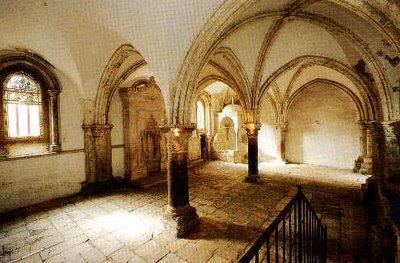
What I Saw In The Holy Land, 12
Psalm 48 describes Mt. Zion as the Lord's "holy mountain," and "joy of the whole earth," and it certainly seems thus when you consider everything that's located there. At left you see the cenacle, or upper room, scene of the Last Supper & later of Pentecost. And guess what is on the bottom floor of thus "upper room?" The traditional tomb of King David. I had no idea, but there is archaeological evidence of an ancient synagogue and Jewish veneration of the site going very far back. Apparently the wealthy friend who loaned Jesus this room made his house on the grounds of the site. Since Islam considers itself a correction of Judaism & Christianity, it also claims interest in Mt. Zion, and during Turkish rule, the cenacle was made part of a mosque which is no longer in use.
The entire mountain (which seems more like a hill now because so much has built up at its base) is filled with yeshivas of various provenance, as this is one of Judaism's holiest sites. Oskar Schindler is buried here, with the inscription "righteous gentile" over his gravesite.
Also on Mt. Zion are two churches of interest. The Benedictine Dormition Abbey is the place where Mary is said to have died --the tradition is that she made her home near the site of the cenacle after the Resurrection.
 See the guy in the bottom left of the picture? Just a few feet further in the direction he's heading and across the way is the entrance to David's tomb. To reach the cenacle, you walk a little further still and round the corner to the left to enter. The cenacle itself is open to Christian tourists, but is Jewish controlled. (Last year I blogged about a deal the Vatican struck to trade control of the cenacle for an ancient Jewish synagogue in Toledo, but it was scuttled in the face of strong objections from some Jewish groups.)
See the guy in the bottom left of the picture? Just a few feet further in the direction he's heading and across the way is the entrance to David's tomb. To reach the cenacle, you walk a little further still and round the corner to the left to enter. The cenacle itself is open to Christian tourists, but is Jewish controlled. (Last year I blogged about a deal the Vatican struck to trade control of the cenacle for an ancient Jewish synagogue in Toledo, but it was scuttled in the face of strong objections from some Jewish groups.)Lower down on Mt. Zion is the Church of Peter in Gallicantu (cock's crow), which is built on the site of Caiaphas' palace. The grounds of this Church are the best place to take pictures of the Mt. of Olives and the Kidron Valley, and there's also a wonderful scale model of the Cld City of Jerusalem that will show you how the city would have looked in Christ's time.
 Caiaphas' palace is fascinating; like most of the ancient sites in and around Jerusalem, his house was a cave complex, and underneath the offices and living quarters was a series of dank lower caves that were used as a jail at the time. It is thought that Christ spent the night here in Caiaphas' dungeon after his arrest --in the very lowest pit, reserved for the worst criminals. Hard in this spot not to be reminded of Joseph's brothers lowering him into a pit, and seeing again how utterly Christ fulfilled the Old Testament prophecies and prefigurements concerning him.
Caiaphas' palace is fascinating; like most of the ancient sites in and around Jerusalem, his house was a cave complex, and underneath the offices and living quarters was a series of dank lower caves that were used as a jail at the time. It is thought that Christ spent the night here in Caiaphas' dungeon after his arrest --in the very lowest pit, reserved for the worst criminals. Hard in this spot not to be reminded of Joseph's brothers lowering him into a pit, and seeing again how utterly Christ fulfilled the Old Testament prophecies and prefigurements concerning him.Sailing, Sailing Over Lake Galilee
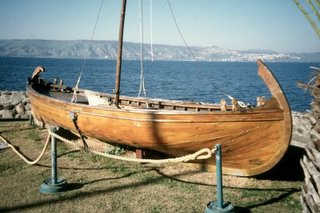
What I Saw In the Holy Land, 11
At left, courtesy of Holy Land Photos, you see the remains of a fishing boat from Jesus' time (just discovered in 1986!) and the full-scale model they made from it. Researchers say it typically had a 5-man crew, and could hold 15 additional passengers.
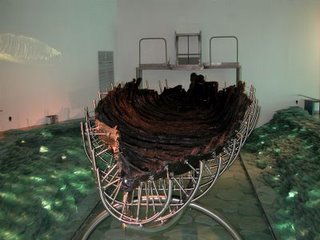 If they say so! Certainly not 20 fat Americans. Nevertheless, one of the fun things to do in the Galilee region is visit Tiberias and take a boat (much larger to accomodate many tourists, but made to look similar so you can feel romantic about it) out on the lake Jesus walked upon. Words cannot describe how lush the site is at this time of year. Looking across the lake you see what Christ saw --namely the Golan Heights, rising like a wall of green out of the deep blue lake.
If they say so! Certainly not 20 fat Americans. Nevertheless, one of the fun things to do in the Galilee region is visit Tiberias and take a boat (much larger to accomodate many tourists, but made to look similar so you can feel romantic about it) out on the lake Jesus walked upon. Words cannot describe how lush the site is at this time of year. Looking across the lake you see what Christ saw --namely the Golan Heights, rising like a wall of green out of the deep blue lake.Incidentally, we had a few different guides during our stay. On the whole I found that the Arab Christians like to stay out of the political question as to whom the land belongs. I suspect that emotionally, as Arabs, they feel one thing; but as Christians who find the Jews treat them better, they all admit they'd rather be under Jewish rule. But we did have one guide --with the cool name "Nain"-- who pointed out "the Golan Heights of Syria" as easily as if he'd been pointing out the local McDonalds. All the other guides had been so careful and honest about the history of the places that he had me doubting myself for awhile: could the Israelis have ceded the Golan Heights & I missed it? Not to worry, though. This guide was an equal opportunity skeptic. According to him, none of the Christian sites were really where we were visiting --they're all actually someplace else. (Syria, no doubt.) And all Muslim religious claims are humbug. (I'll have more to say on that topic later.) He was the only grumpy Christian I met in Israel.
Back to Tiberias. Of course in all of these places we read passages from the Gospels to bring them alive. But I have to confess that looking at the Golan Heights to the Northeast and the sun beginning to set into the equally gorgeous mountains on the Western shore, I had an impious thought. Namely, that there was absolutely no way that a crowd of people on foot could have beaten Christ and the disciples to the opposite shore of Galilee as the verses I'd just heard said. A boat could make pretty short work of the crossing, but the distance on foot is so long that --well, I mean it's ridiculous.
Fish For Breakfast

What I Saw In The Holy Land, 10
Lake Galilee by any other name (and it has several, as the post title indicates) would look as blue. Although the morning started miserably with drenching rain in Cana, after lunch in Taghba (where we ate what the locals call "Peter's fish"), the sky cleared and we went to the Church of Peter's Primacy, which is really just a little chapel built over a big rock where it's thought that Christ prepared breakfast for the disciples after the Resurrection. The "Peter's primacy" refers to Christ's thrice asking Peter: "Do you love me? Feed my sheep." (Photo courtesy of Holy Land Photos.)
The sea, as I've mentioned, is quiet, and as the aforementioned is possibly my favorite passage in all of scripture, I took the opportunity to break apart from our group and simply walk along the lakeshore a little, looking at nothing except the view, and trying to envision the scene. I was really just a few feet from the steps of the chapel you see at left here, looking off into the distance.
Hmm. Will I tell you a cool experience I had in prayer? Telling risks cheapening; then again, I don't think you take a trip like this just to keep it to yourself. What to do? Well, I'll give it a shot. There is always "delete" if I think better of it.
Mount of Beatitudes
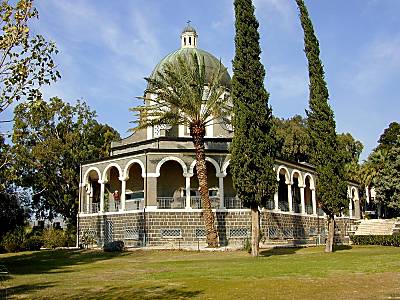
What I Saw In The Holy Land, 9
Not what you expected, right? I always pictured the people sitting on rocks, such as you might find in the hills of Judea, but no, the Mount of Beatitudes is lush and green. In 2000, the American tv station CBS ran a mini-series on the life of Christ which was generally execrable (Christ suffers from teen angst, mostly), but I did appreciate its Sermon on the Mount scene. Instead of the wild-eyed, solemn & mystical Christ of Zefferelli's imagining, it showed an engaging Christ walking a bit among the crowd, delivering the sermon in a give-and-take style, in interaction with questions and even smart-aleck remarks from the crowd. I'm sure that's what it must have been like. His teaching was challenging, but his style was warm and engaging, I think.
 If you visit here, you must send someone from your party down to the shoreline to speak, otherwise you'll find yourself doubting whether anyone could have heard Christ's words, because at the top of the hill the wind seems to carry words away. But if the speaker is at the shoreline, you'll be astonished at what you can hear --the place is a natural amphitheater.
If you visit here, you must send someone from your party down to the shoreline to speak, otherwise you'll find yourself doubting whether anyone could have heard Christ's words, because at the top of the hill the wind seems to carry words away. But if the speaker is at the shoreline, you'll be astonished at what you can hear --the place is a natural amphitheater. Capernaum
 What I Saw In The Holy Land, 8
What I Saw In The Holy Land, 8These are the ruins of Jesus' adopted home-town, Capernaum. This weird-looking Church was built in the '90s, but it's not such a monstrosity when you're inside it. Like most churches built right over holy sites, it's octagonal in shape, to accomodate the treasured place beneath. This church has the tabernacle dead center, and the building is elevated, with a glass bottom in the center so that you can look straight down to the ruins of Peter's house. (Did I mention already the local joke about Peter betraying Christ because Christ healed his mother-in-law? Maybe I did. Sorry.)
The above photo is taken from the ruins of the local synagogue, below, where Christ first proclaimed the Good News ("this day, this scripture is
 fulfilled in your hearing"). The ruins are of a 4th c. synagogue, but the Franciscans believe the layer of black basalt rocks at the base of the ruins is from the synagogue Christ actually preached in. Excavations here have given archaeologists a great sense of the daily life of people in Christ's time (see this excellent site on the research) because since Capernaum was never rebuilt as a place people live once it was destroyed, the site was "pure." For the same reason, this is one of the most satisfying places to visit if you want to be able to picture what the towns in Christ's time looked like. These are the first houses we saw that were completely constructed rather than being hewn from pre-existent caves. The most interesting discovery for me was how close people built their houses to the synagogue in these towns. You certainly understand after visiting how natural it was for Christ to stop at Peter's house after preaching --it was about a city block away-- and why the crowds in these towns all knew where Jesus was. These houses also give you a completely different mental picture of the incident from last Sunday's gospel in which the friends lower the paraplegic through the roof of the house (which may even have been Peter's house). I always pictured the pallet being lowered from a dangerous height, but in fact the paralytic man wouldn't have had far to go to reach Jesus, as the typical thatch roof wouldn't have been that much higher than a man's head.
fulfilled in your hearing"). The ruins are of a 4th c. synagogue, but the Franciscans believe the layer of black basalt rocks at the base of the ruins is from the synagogue Christ actually preached in. Excavations here have given archaeologists a great sense of the daily life of people in Christ's time (see this excellent site on the research) because since Capernaum was never rebuilt as a place people live once it was destroyed, the site was "pure." For the same reason, this is one of the most satisfying places to visit if you want to be able to picture what the towns in Christ's time looked like. These are the first houses we saw that were completely constructed rather than being hewn from pre-existent caves. The most interesting discovery for me was how close people built their houses to the synagogue in these towns. You certainly understand after visiting how natural it was for Christ to stop at Peter's house after preaching --it was about a city block away-- and why the crowds in these towns all knew where Jesus was. These houses also give you a completely different mental picture of the incident from last Sunday's gospel in which the friends lower the paraplegic through the roof of the house (which may even have been Peter's house). I always pictured the pallet being lowered from a dangerous height, but in fact the paralytic man wouldn't have had far to go to reach Jesus, as the typical thatch roof wouldn't have been that much higher than a man's head."Free Trader Expresses His Doubts"
Water Into Wine
 What I Saw In The Holy Land, part 7
What I Saw In The Holy Land, part 7 (This is a frequent thought of mine looking at landscapes, mountain ranges or clouds: how everything looks as if it travels by wave --although I don't know what a geologist or physicist would say about that.) Anyway, I bring this up only by way of saying that through free-association I was thinking about the great flood at precisely the moment I saw this, which seemed like a gift.
(This is a frequent thought of mine looking at landscapes, mountain ranges or clouds: how everything looks as if it travels by wave --although I don't know what a geologist or physicist would say about that.) Anyway, I bring this up only by way of saying that through free-association I was thinking about the great flood at precisely the moment I saw this, which seemed like a gift. It Is Good For Us To Be Here
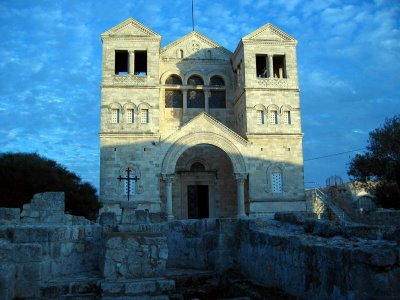 What I Saw In The Holy Land, part 6
What I Saw In The Holy Land, part 6Link Round-Up Before Returning To Israel
Then, before I get back to travel-blogging, here are a few items of interest I found myself today.
- AEI & a British think-tank sponsored a conference last week about how our "fraidy-cat society" is stifling initiative and decent living. See the WaTi write-up here. (Dare I say that I'm afraid they're right?)
- Check out Christopher Caldwell on Nicolas Sarkozy, the man we hope beats Dominique de Villepin in the French election next year.
- Is it my imagination or does the Holy See's commentary on the Danish cartoon uprising seem rather pointed? Flying into Israel I went through Milan, and happened to pick up the Italian papers on the day the Vatican released its statement that there's no right to blaspheme someone else's religion. But when the Pope met with the Lebanese PM, the description of the exchange made it seem to me that His Holiness is rather tough-minded on the subject. And then Cardinal Sodano said this last night:
"Christians should not claim a "freedom to offend," the cardinal said. But others should not claim "the freedom to destroy us."
- By the way, just so you'll be impressed, I brought Italian papers with the published cartoons with me into Israel, potentially within sight of angry Muslims. Now who has free speech props with you?
- Abruptly changing the subject, I point you to WaTi's profile this morning of the funniest man in Washington, Stan Evans. This story, while laudatory, makes Stan seem more like an old curmudgeon than anything else, which doesn't do him justice, since he's fun-loving and loves to be around young people. Not to mention he's been as instrumental to the ascendancy of Conservatism as Bill Buckley, though to less acclaim.
I attended his NJC program one summer, and far from being an ideologue mill, it was a place where you could learn the craft of journalism instead of becoming an ideologue. Although some of the most famous grads are conservative, there were libs there too who also went on to respectable careers (Karen Lehman of the New Republic, for one). I'll never forget the advice he gave me when I went to college:
Never study on a Friday night; never loan your albums to anyone and Strauss: no.
Well, Mr. Evans, I followed the first two.
Plus, how can you not love a man who has a second home for the sole purpose of storing his books? And whose desk has a "Thank you for smoking" sign? And who used to have a three-legged dog named "Zip," who accompanied him everywhere, and for whom he always invented new and heroic explanations of how the leg came to be missing?
Too Hip For The Room
 I don't actually do podcasts myself, but if you do, you can enjoy Cardinal Arinze on various topics.
I don't actually do podcasts myself, but if you do, you can enjoy Cardinal Arinze on various topics.
What If There Were A Massive Religious Demonstration And No One Got Hurt?
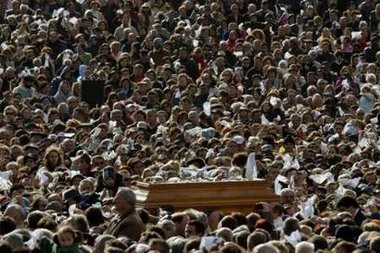
Sr. Lucia dos Santos, one of the three visionaries of Fatima, passed away a year ago. Yesterday her coffin was transferred to the Fatima shrine. Curtsy to open book.
We Interrupt This Travelog
Making marriage available to same-sex couples therefore presupposes that they will also be given the right to adopt and receive medical assistance for procreation, and even the right to use surrogate mothers, because such couples are not fertile. The Mission is divided on this subject. It considered the consequences for the child’s development and the construction of his or her identity of creating a fictitious filiation by law – two fathers, or two mothers – which is biologically neither real nor plausible.
Diametrically opposed representations were made by the people heard on this point, and they failed to persuade a majority of the Mission to support recognizing a right to a child or a right to marriage, for same-sex couples. A majority of the Mission does not wish to question the fundamental principles of the law of filiation, which are based on the tripartite unit of ‘a father, a mother, a child’, citing the principle of caution. For that reason, that majority also, logically, chose to deny access to marriage to same-sex couples.
Miriam's House
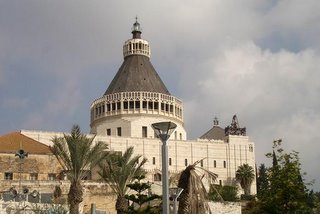 What I Saw In The Holy Land 5.1
What I Saw In The Holy Land 5.1
Mary's Home
 What I Saw In The Holy Land, part 5
What I Saw In The Holy Land, part 5When I learned that Nazareth is a majority Arab city, I expected it to look like Bethlehem: a dying city hidden behind a wall or fence. Au contraire; it's a bustling place, known among the locals for its traffic. The difference is that the inhabitants are not Palestinian Arabs, but Israeli Arabs. They are Israeli citizens, carry Israeli passports, vote in Israeli elections, even serve in the Israeli Defense Force if they want to (few do, and they aren't required to as Israeli Jews are). Nazareth is a town that supports the Palestinian Christian claim that tensions are not so much Jew-Arab as Muslim-everyone else. Here you have Arabs living in peace with with their neighbors for the most part, governing their own town and thriving without the Israeli "man" keeping them down. The tensions that exist are between Muslims and Christians (few Jews live there), but at present these are more political tensions than violent ones. Majority Muslim city council using public lands for mosques and minarets, that sort of thing.
 Nazareth feels less tense, more jolly. The only aggression I experienced was from peddlers in front of their souvenir shops. They see you going by and rush to greet you in six languages to see which one seems to "take." And if you buy anything, they're not satisfied for you to take one or two. Their bargains are not on the order of 1 for $3 and 2 for $5. It's more like 10 for $5 and 16 for $8. Of course this is a culture of barter, so you never just accept the price, but my hardest-driven bargain came trying to purchase two little stuffed camels for my little guys. Just two. Not four or six, as the guy wanted. It almost seemed more important to him to unload four than to get his price, for reasons I can only speculate about. (This is an Israeli tourism stock photo; I have no idea who this person is, and from her dress it's summertime --we definitely needed our coats. But I wanted you to see what these shops look like. Religious goods of course, plus colorful ceramic plates, pashmina scarves and knick-knacks.)
Nazareth feels less tense, more jolly. The only aggression I experienced was from peddlers in front of their souvenir shops. They see you going by and rush to greet you in six languages to see which one seems to "take." And if you buy anything, they're not satisfied for you to take one or two. Their bargains are not on the order of 1 for $3 and 2 for $5. It's more like 10 for $5 and 16 for $8. Of course this is a culture of barter, so you never just accept the price, but my hardest-driven bargain came trying to purchase two little stuffed camels for my little guys. Just two. Not four or six, as the guy wanted. It almost seemed more important to him to unload four than to get his price, for reasons I can only speculate about. (This is an Israeli tourism stock photo; I have no idea who this person is, and from her dress it's summertime --we definitely needed our coats. But I wanted you to see what these shops look like. Religious goods of course, plus colorful ceramic plates, pashmina scarves and knick-knacks.)Concurring Mostly & Dissenting In Part
But what does respect mean? When I visit a mosque, I show my respect by taking off my shoes. I follow the customs, just as I do in a church, synagogue or other holy place. But if a believer demands that I, as a nonbeliever, observe his taboos in the public domain, he is not asking for my respect, but for my submission. And that is incompatible with a secular democracy.
That, plus the fact that decent people do not impose the death penalty for petulance is the reason you have to stand with the newspapers at this point.
Nonetheless, I continue to think --in fact this column definitively convinces me-- that there is something fundamentally unserious --something almost, but not quite right--in this effort to defy de facto shari'a brought on by Islamic fundamentalist intimidation. Rose cites as his inspirations the fact that an artist wasn't allowed to display his torn up Bibles and Korans in a --presumably publicly funded-- museum; and a comedian confessed he'd happily pee on the Bible but was afraid to pee on the Koran. (And that desire is considered normal why?) Plus people were afraid to illustrate a story of Mohammed --ok, I'll give him that one. Then he says he didn't mean to offend. C'mon, now, how can that be the case if the cartoons were published as a way to defend the right to pee on or tear up the Koran? That's what he says, right? And anyway, isn't the general point of a political cartoon to be disrespectful? He's on much stronger ground, I think, when he argues that jibing at Muslims is a sign that they've arrived --they're part of the Danish family now, not just guests to whom you have to be polite. But the two arguments are opposed.
He says his action in printing the cartoons is in the tradition of the sainted "Andrei Sakharov, Vladimir Bukovsky, Alexander Solzhenitsyn, Natan Sharansky, Boris Pasternak." But I don't recall any of those gentlemen peeing on the Communist Manifesto or languishing in the gulag for having cartooned Lenin. Does he want to oppose Islam or just tease it good-naturedly?
Potpourri of Popery, Part The Next
- Archbishop Niedermeyer's Homily for his installation mass is worth a read. (Curtsy to Zadok.) It's mostly a summary of Deus Caritas Est as his program for San Francisco. St. Blog's is commenting most on this portion:
Of course there's a pachyderm in the parsonage that goes unmentioned here, but I think he strikes the right tone; it's heartening.In the many moral dilemmas that face them today, Catholics look to their Church, to their faith, to be a compass, not a weathervane. The Church must point toward the true North of God’s loving will, and not merely track where the winds, or the polls, are blowing. This is not a new issue. About seventy years ago, the poet T. S. Eliot indicated why many people in our modern world aren’t particularly fond of the Church: “She is hard where they would be easy, and easy where they would be hard.” “Hard where they would be easy:” think of abortion and euthanasia; “Easy where they would be hard:” think of capital punishment and immigration law.
What then are citizens to do, when they disagree? Well, first of all, disagree without being disagreeable. Presume good faith until it is proven otherwise. At the end of one of his poems, Robert Frost famously suggested his own epitaph: “I had a lover’s quarrel with the world.” I believe that is a richly helpful image. God often had a lover’s quarrel with his people, Israel, and the prophets were his spokespersons. Please presume that if the Church challenges an action, a policy or a program it is because she loves the world around her, and wants what is best for it. All around you here in the Cathedral today you can see evidence of the Church’s lifelong love for the arts: Architecture, painting, sculpture, and music. Always presume that it is love that led to a quarrel, and that love will endure when the quarrel has passed.
- Here's the Holy Father's homily from his Feb. 5th visit to St. Anne's parish. Apparently the delay in the transcript is because he ad-libbed. This is the kind of thing that just falls spontaneously from his lips, apparently. Since the Gospel was about the healing of Peter's mother-in-law, I'll just pass along the crack one of guides made at the site of the ruins of Peter's house. He said it's an old joke among the Palestinian Christians that Peter denied Christ because he'd healed his mother-in-law. Ha-ha. The Pope's a bit more respectful of women.
This woman who has just been healed, the Gospel says, begins to serve them. She sets to work immediately to be available to others, and thus becomes a representative of so many good women, mothers, grandmothers, women in various
professions, who are available, who get up and serve and are the soul of the family, the soul of the parish.
And here, on looking at the painting above the altar, we see that they do not only perform external services; St Anne is introducing her great daughter, Our Lady, to the Sacred Scriptures, to the hope of Israel, for which she was precisely to be the place of its fulfilment.
Moreover, women were the first messengers of the word of God in the Gospel, they were true evangelists. And it seems to me that this Gospel, with this apparently very modest episode, is offering us in this very Church of St Anne an opportunity to say a heartfelt "thank you" to all the women who care for the parish, the women who serve in all its dimensions, who help us to know the Word of God ever anew, not only with our minds but also with our hearts.
- I hadn't planned to address this yet, but as long as the Pope brings it up, I'll mention that Fr. John Solana, LC, of the Pontifical Institute Notre Dame of Jerusalem Center, has a terrific initiative underway, with the approval of the Holy See and the Patriarch of Jerusalem: The Galilee Project. He wants to develop a parcel of land in Magdala, on the shore of Lake Galilee, as a northern center for pilgrims. Currently the only places for pilgrims to lodge overnight are in Jerusalem, which means much of the richness of the Galilee area --about which I'll begin writing shortly-- goes under-explored.
This would be a worthy work in itself --great for pilgrims and great for the local economy. But since it's the home of Mary Magdalene, the first to hear and spread the Good News, Fr. John's idea is to create on the same site a conference center for studies on the dignity of woman --using Christ's relationships with the women of the Gospels as the starting point for study. The ruins of Mary Magdalene's tomb are nearby but unused, and the Franciscans have already agreed that if the center gets built, they'll allow the ruins to be opened for pilgrims. Just as Notre Dame is not only a hotel, but also a center for ecumenism, the Galilee Center would have a dual role. I can't think of a better place to set a center devoted to the dignity of woman than so close to a people a little unclear on the concept. Go here for details or to help bring the project to fruition.
- Well, I took my little digression, but do go back and read the homily. The Pope packs interesting ideas on several topics into a short space. And then there are the Angeluses (5, 12) and Audiences (15 Italian, 8 English), to catch up on. He completed the cycle of Psalms & Prayers from JPG's catechesis with the Feb. 15th audience on the Magnificat, so it will be interesting to see what his own program will be.
Can Anything Good Come Out Of Minnesota Public Radio?
You Should Have Seen The One That Got Away
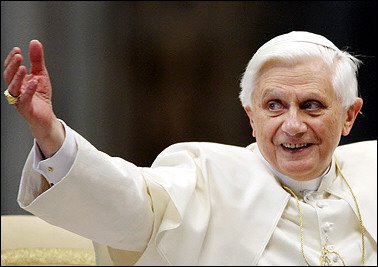 That's what Zadok, who apparently came back from hiatus while I was out, says it looks like the pope is saying. In fact he was addressing a French Catholic community (AFP photo).
That's what Zadok, who apparently came back from hiatus while I was out, says it looks like the pope is saying. In fact he was addressing a French Catholic community (AFP photo).In case you're interested in things other than my pilgrimage, don't forget to visit Ninme, Queen of Links, who has the latest Mark Steyn, and various and sundry other items. (She's also sending a whole heckuva lot of traffic my way for my travelog, for which thanks, and welcome to her readers.)
I've been meaning to call your attention, too, to one of Ninme's blog friends, the Pedant-General in Ordinary of Infinitives Unsplit. The P-G, as I hope he doesn't mind me calling him, since I read him enough to feel friendly, has a corker of a post for anyone feeling soft-hearted about communism. My kind of person. (The P-G that is.)
Tim Blair has a good round-up on Danish cartoon fall-out.
One Last Post On Jericho

What I Saw In The Holy Land 4.4
These people aren't with our group (by the way, it's verboten in the Holy Land to wear shorts. No one will let you enter any of the holy places unless your legs are decently covered, so don't try this), but I wanted to show you a sycamore tree. The Palestinian Authority has been trying to build up Jericho as a tourist site, so it claims this tree is the very one Zaccheus mounted to see Christ. That's a bit doubtful, since it's not on the main road Christ would have used, but it's nice to get a sense of what a sycamore looks like. I wish you could see the fences across the street and just to the left in this photo; they're covered with blooming vines in tropical colors: orange, fuschia, pink. And every home seems to have its own date palm, banana and citrus trees. The citrus trees weren't there of course in Christ's time --they're a Muslim import-- but they certainly make everything smell wonderful.
Also in Jericho are some sites I didn't see and wish we'd had time for, including an ancient synagogue and an Herodian palace. Next stop: Nazareth.





